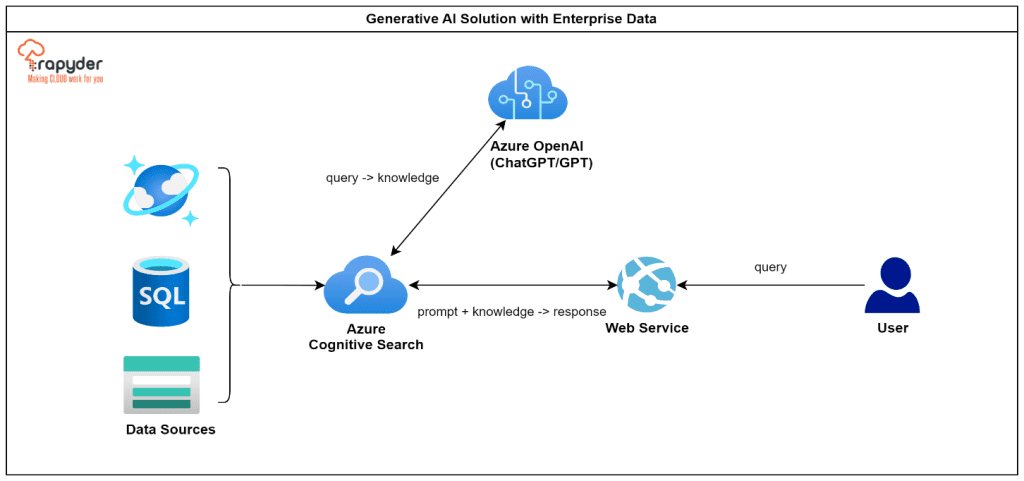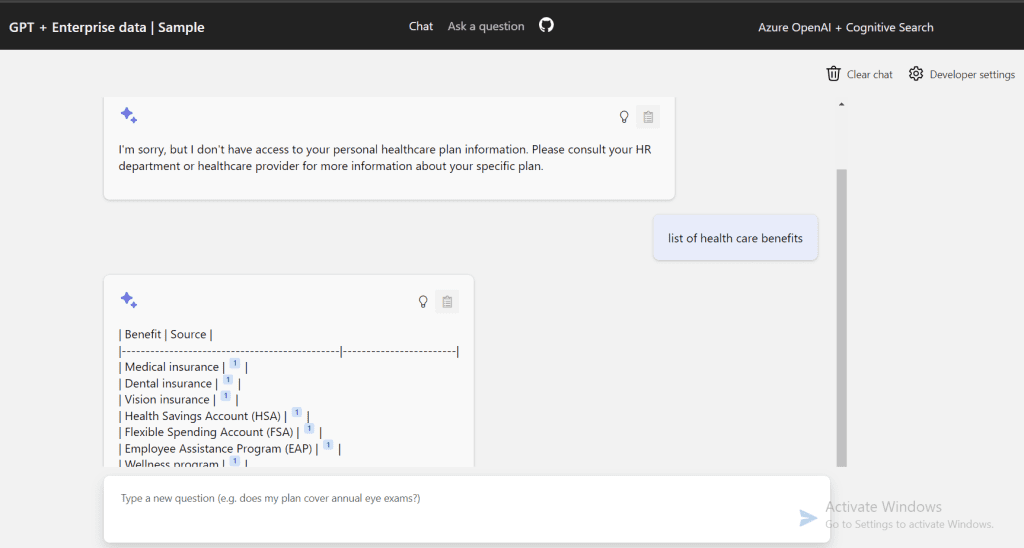Written By: Kumar Shanu, Machine Learning Specialist, Rapyder Cloud Solutions
Generative AI is a powerful technology that can create new content from existing data. It can be used for various applications such as text generation, image synthesis, speech synthesis, and more. One of the most famous examples of generative AI is ChatGPT, a conversational agent that uses natural language to chat with humans on various topics.
However, ChatGPT is not designed to handle enterprise data, which may have specific domain knowledge, terminology, and privacy requirements. That’s why we have developed a solution that allows enterprise customers to use generative AI for their data. Our solution enables you to create a ChatGPT-like experience over your data using state-of-the-art generative models like OpenAI’s ChatGPT.
Our solution enables enterprise customers to use generative AI for their enterprise data. It can help you improve your customer service, employee engagement, business intelligence, and more.

How it works:
Our solution uses two powerful technologies: OpenAI GPT3.5-turbo model and Azure Cognitive Search. The GPT3.5-turbo model is a large-scale language model that can generate natural and coherent text on any topic. Azure Cognitive Search is a cloud service that allows you to index and query your data easily. By combining these two technologies, we use a technique called Retrieval Augmented Generation (RAG), which enables the generative AI application to respond from the user data-only. This technique allows a Generative AI model to respond to the user’s query based on the knowledge received from the search index created by Azure Cognitive Search.
What is Azure Cognitive Search:
Azure cognitive search is a cloud-based service provided by Azure that uses advanced AI capabilities to search and enable content discovery across your data. It uses advanced built-in ML technologies to understand user intent and is then provided with the most relevant search result. Azure Cognitive Search service creates two major components, i.e., Indexer and Index.
Indexer:
An Indexer is a crawler that extracts the searchable content from the data sources and creates a search index. Indexer automatically scans through the data sources and extracts content from them. It also creates a field-to-field mapping between the data source and the search index.
Index:
An Index is a document that contains all your searchable content along with the fields, enhanced content, and insights. Index is available to the search engine to make queries and provide search results.

Features:
- Talk with your data as if it is a human.
- Enable semantic search on your data.
- More personalized results only from your data.
- Chat and QnA.
- Various options for users to evaluate trustworthiness with citation and tracking of content.
- Settings to tweak behavior of Gen AI model.
- Monitoring and reporting.
- Fully Managed Service.
- Good User Experience.
Business Use Cases:
This solution can be used in many domains and industries that deal with a huge amount of data and many documents. Some examples are Banking, Fintech, Edtech, Healthcare, legal firms, and Government.
Conclusion:
It is a very powerful solution that Rapyder provides as a packaged solution. Customers do not need to be worried about deploying and managing anything; Rapyder is here for you.




